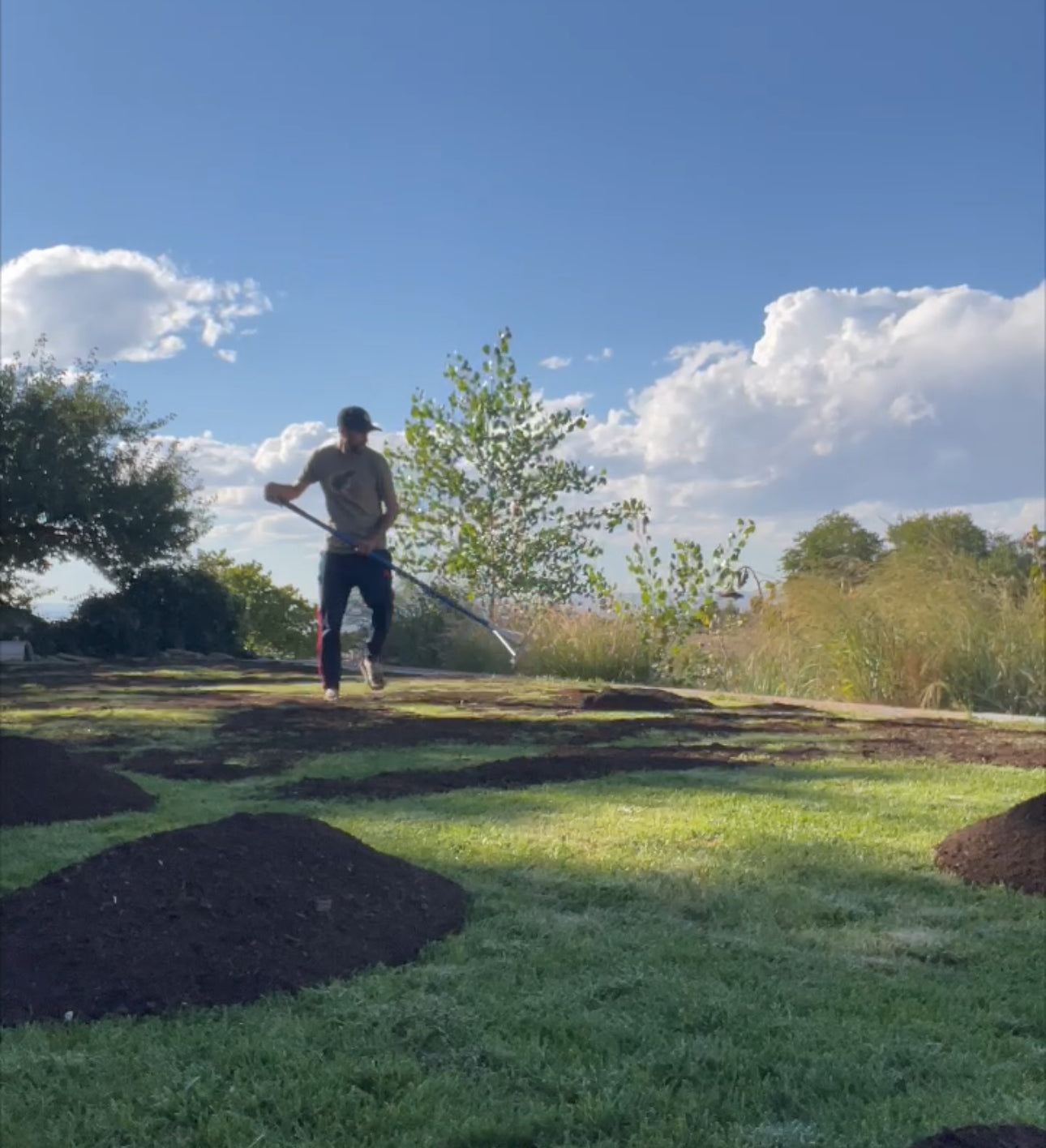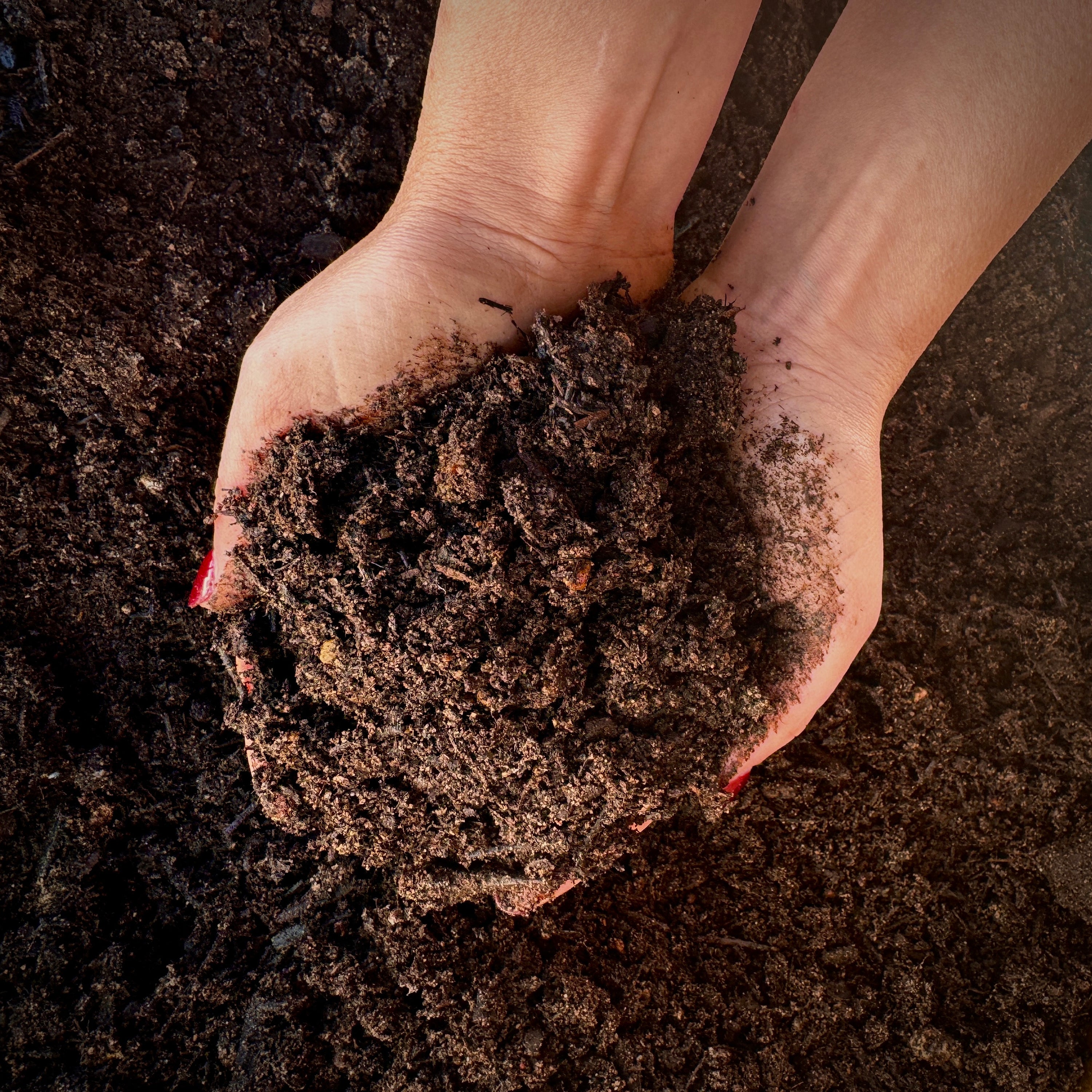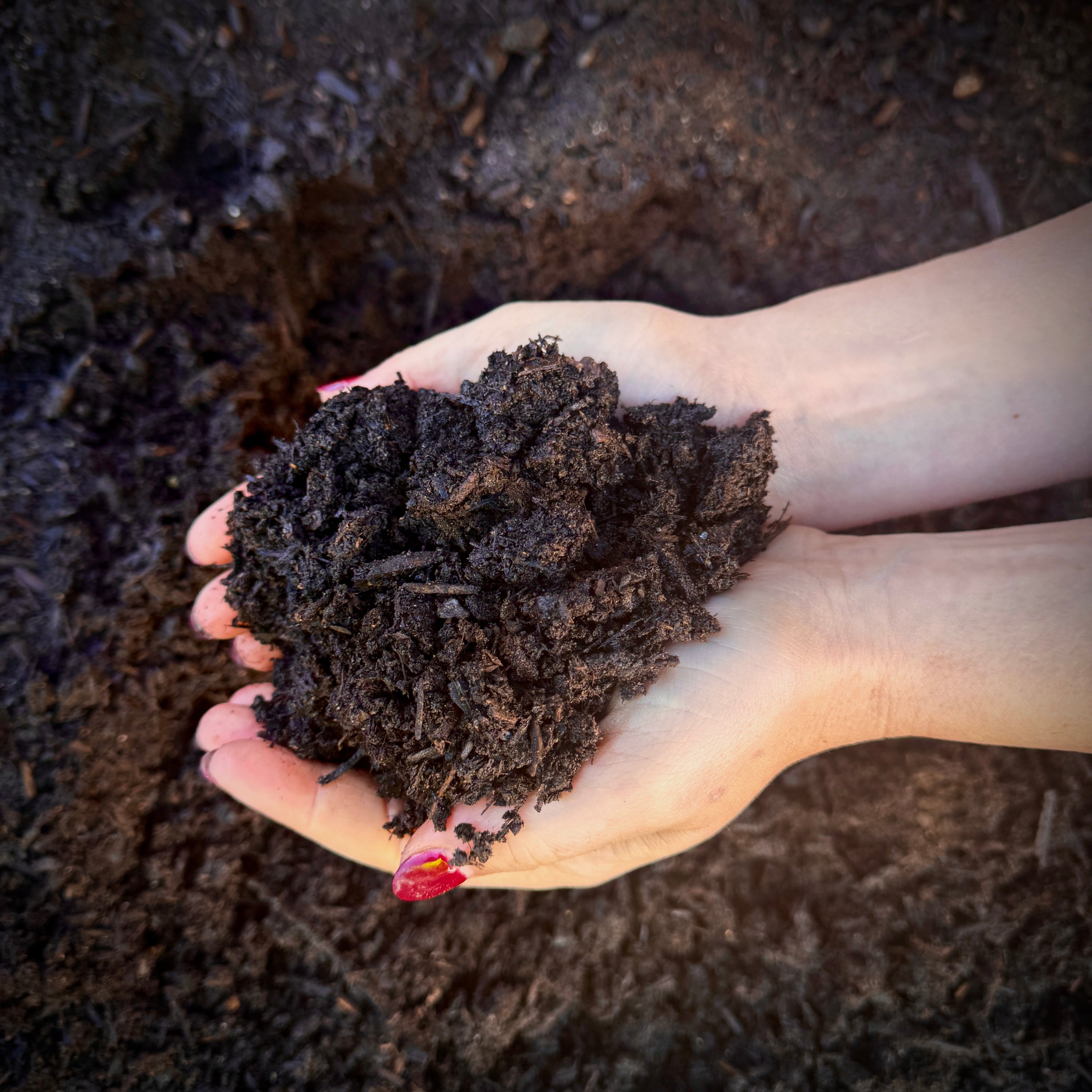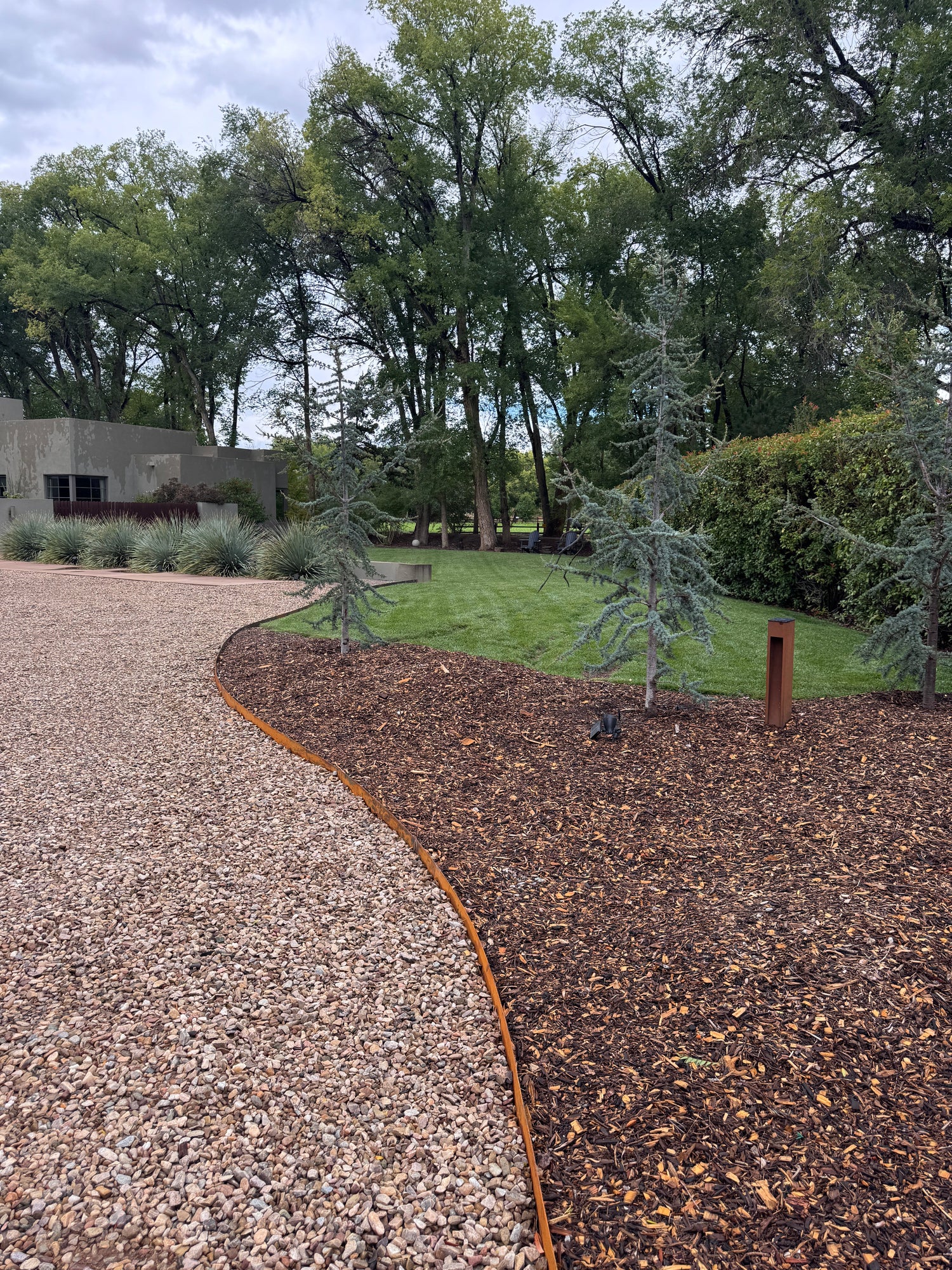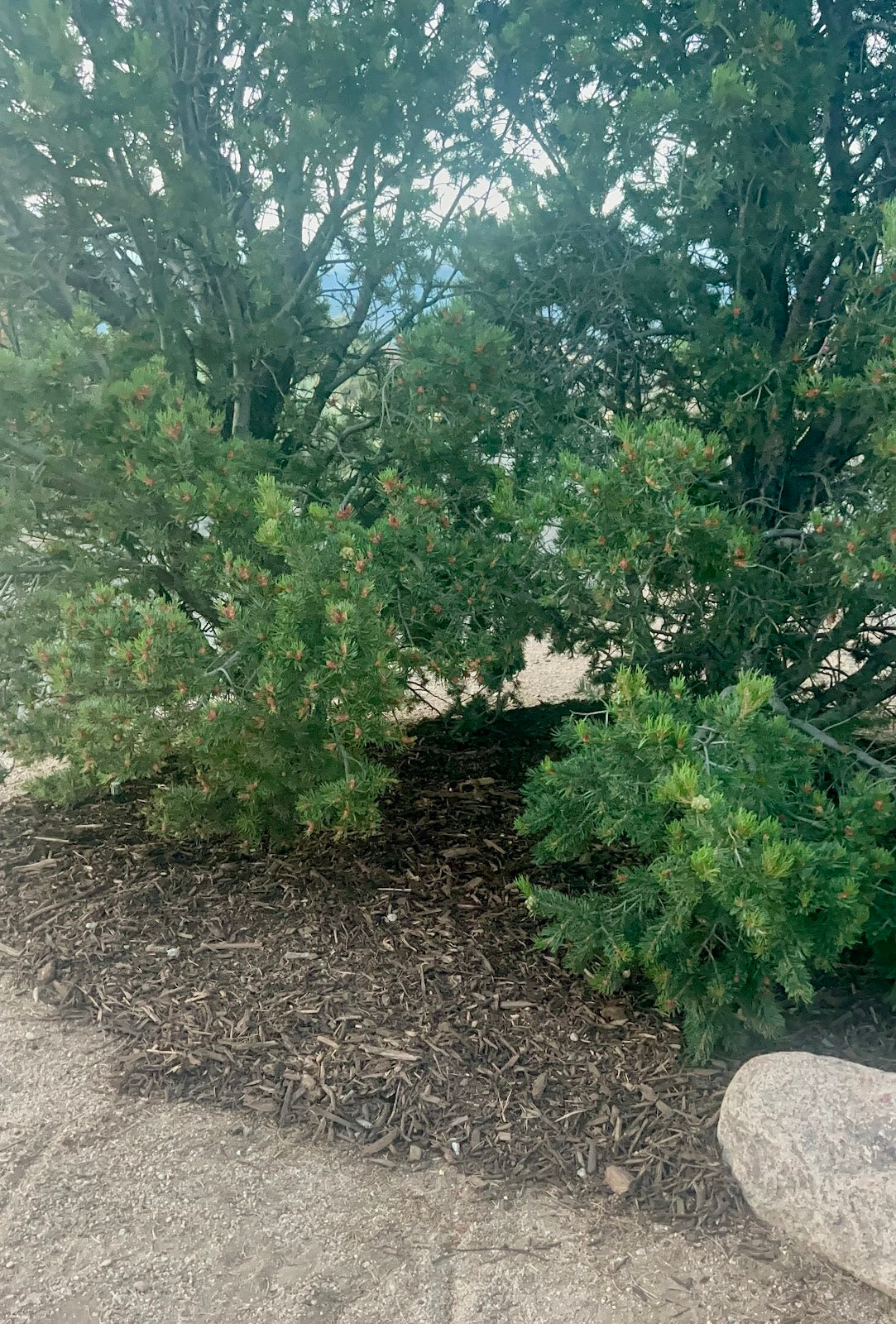By Wendy Blair, Expert Gardener, Instagram: @505garden
A perfect green lawn won't pop up in the summer like magic without preparation. Winterizing your lawn in the fall is necessary as part of the process to keep your grass thick and healthy. Most lawns in the Albuquerque area and to the north are planted with “cool season grasses”. Cool season grasses are typically perennial rye, fescue and Kentucky bluegrass. Following these steps for winterizing your lawn will give you a beautiful yard in the spring that is safe for your family and pets!
Step 1: Remove fallen leaves from your lawn
It is a big trend right now to “leave the leaves,” however it's not the best practice when it comes to your lawn. Turf lawns can’t tolerate a thick layer of leaves that can become wet and matted over the winter months - as this limits oxygen and sunlight. It’s best to rake the leaves off your lawn after most of the trees around your yard have defoliated. A small amount of leaves can always be mowed over when they’re dry so the smaller particles can add nutrients to the soil.
Step 2: Remove the weeds
This is not a fun job, but it is necessary. Winterizing your lawn is designed to improve the performance of your grass. However, this also improves the performance of weeds. Removing weeds now also limits competition for water and nutrients over the winter. Try to avoid harsh chemicals when getting rid of weeds. Over time, chemicals can damage lawn growth and can negatively impact plants and trees surrounding your yard. Pull weeds by hand if possible.
Step 3: Mowing
Keep mowing your lawn - although it will be less frequent as the temperature drops. Lawns that are left to grow long can harbor moisture and can lead to mold. However cutting the grass too low can leave roots exposed to potentially damaging frost. The best way to get the right height is by raising your mower blade by ½’ in the fall. Stop mowing when your turf is dormant.

Step 4: Amend your lawn with Soilutions COMPOST before the first frost (October/November)
As temperatures drop and daylight decreases, grasses (like most perennials) send more energy into growing roots as opposed to growing leaves. Grass roots will remain active in colder temperatures and they will store nutrients from the compost over the winter. A compost application in the fall will ensure your lawn is fed and will come back healthy in the spring. We recommend applying a 1/2” layer of compost over your turf then raking and watering it in. Using Compost instead of chemical fertilizers ensures your lawn is safe for you and your family. Another benefit of using compost over chemical winterizers is there is no chance of burning your lawn. If chemical winterizers are used early and there is a temperature spike, lawns have a chance of burning before they go into dormancy. That will not happen when using organic matter like compost. Therefore the timing of your winterizing can be more flexible when using compost.


